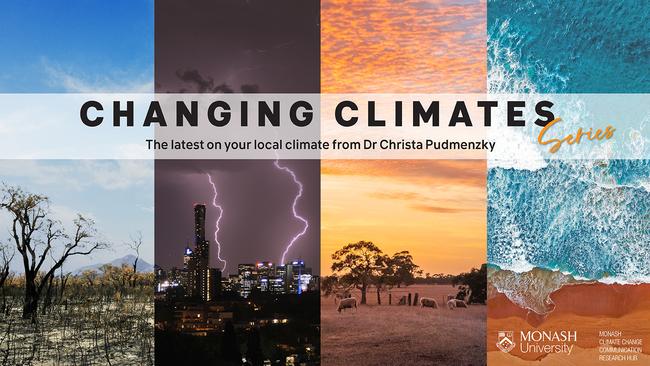Demystifying the greenhouse effect and net zero emission targets
Host of Ipswich's Changing Climates series, Dr Christa Pudmenzky, explains how our June temperatures are rising. Plus, learn about how reaching net zero emissions can limit this warming.

Hyperlocal
Don't miss out on the headlines from Hyperlocal. Followed categories will be added to My News.
Data from the Bureau of Meteorology suggests Ipswich's June climate is warming.
Our average June overnight temperature now sits at 7.5C.
That's 2.6C warmer than the early 1970s.

This change is primarily due to an enhanced greenhouse effect.
The greenhouse effect is a natural atmospheric process that helps keep the Earth at the right temperature for us to live.
Greenhouse gases – such as carbon dioxide, methane and water vapour – occur naturally in the atmosphere.
Just like a blanket traps the heat that a person radiates, these greenhouse gases trap the heat the Earth radiates.
Without this, the Earth's average temperature would be about 33C cooler than it is.
While greenhouse gases have remained at relatively stable levels for thousands of years, industrial processes developed since the 1700s are releasing them at an unprecedented rate.
This has exacerbated the greenhouse effect beyond natural levels, trapping more heat in our atmosphere and causing the climate to rapidly warm around the world.
In fact, the last seven years have been the warmest in recorded history.
Rising temperatures have contributed to an increase in the frequency and severity of extreme weather events including heatwaves, bushfires and floods.
In order to minimise these climate impacts, we need to reduce our greenhouse emissions to net zero.
What's net zero?
While the term 'net zero' has been commonly used in conversations around climate change, its meaning hasn't always been clear.
In short, it refers to achieving an overall balance between the greenhouse gases we produce and those taken out of the atmosphere.
To date, more than 70 countries have set such a target.
In Australia, we have committed to achieve a 43 per cent reduction in emissions by 2030, with the aim of reaching net zero by 2050.
However, a recent report indicates current climate policies both in Australia and around the world will fall well short of these targets.
While reaching net zero by 2050 is a good goal, the sooner we reduce emissions, the better chance we have of avoiding the worsening impacts of climate change.
Accordingly, the 2021 Glasgow Climate Pact called on countries to strengthen their action on climate change by the end of this year.
This would involve major shifts, particularly in the energy sector which currently generates around three-quarters of total global emissions.
Experts claim a rapid uptake of renewable energy resources like wind and solar is key to a net zero future.
Australia is primed for this transition, being one of the sunniest and windiest countries in the world.
In fact, our potential for renewable energy generation is 500 times greater than our current power capacity.
Utilising this will be beneficial in restoring our greenhouse gas emissions to pre-industrial levels and mitigating the impacts of climate change.
Hear from your community:

Want more information on how your climate is changing? Check out the last article in this series.
Dr Christa Pudmenzky is a climate scientist at the University of Southern Queensland.
This column is part of a collaboration between Monash University and News Corp to deliver hyperlocal weather and climate information.

